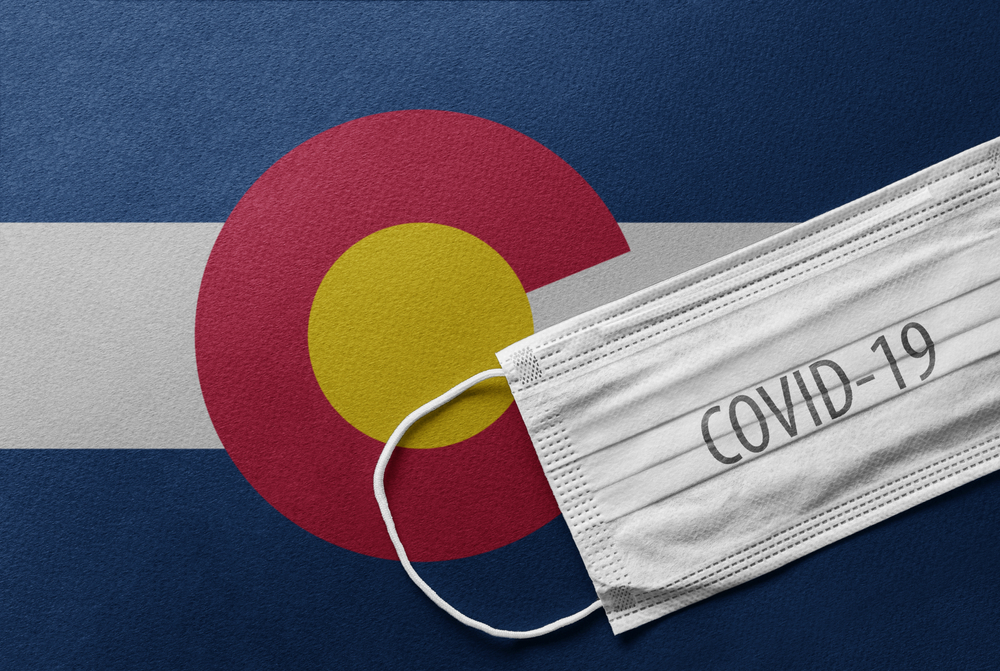
How COVID Has Impacted Colorado
Colorado has long been a leader in many fields, and this includes its response to the COVID-19 pandemic, but the global public health crisis has taken its toll on the Centennial State. In addition to more than 60,000 confirmed cases of COVID-19 in the state that includes 2000 deaths, the state has experienced a serious economic downturn that has produced a 16 percent unemployment rate since March.
Like most other states, Colorado has been hard hit by the pandemic and any recovery for the state’s economy is likely to depend on medical advances in treating or preventing COVID-19 infections. The state has already fallen into a huge budget deficit that it will likely be paying off for years to come.
COVID-19 in Colorado
It wasn’t until March 5, 2020 that Colorado confirmed its first cases of COVID-19 infection. On March 10, Governor Jared Polis declared a state of emergency with 17 presumptive positive cases in the state. Days later, major school systems including Denver Public Schools announced that they were closing for an initial period of two weeks.
On March 13, Colorado announced the death of an 80-year old resident from COVID-19, the first in the state. Almost immediately, Governor Polis issued a public request for former doctors and nurses to rejoin the medical workforce in anticipation of a surge in COVID-19 cases.
On March 14, the governor ordered the closure of downhill ski areas for one week, followed days later by an order to close restaurants and bars as well as prohibit gatherings of 50 or more people. On March 18, Polis closed all schools until April 17 and expanded his previous order to include gatherings of ten people or more. San Miguel County issued a shelter in place order for all residents.
Governor Jared Polis issued a statewide lockdown order on March 25. The stay-at-home order remained in effect until April 11. Gunnison County, CO ranked third in the country in number of COVID-19 cases per capita, while Eagle County ranked eighth. In mid-July, Governor Polis issued a statewide order for all Coloradans aged 10 or older to wear a face covering in public.
The state experienced a long period of decline beginning in late April until a peak of 275 COVID-19 hospitalizations in late July. As of September, there were 62,575 confirmed COVID-19 cases in the state that include 2,006 deaths. The COVID-19 positivity rate for the past week is 2.68 percent which is considerably lower than the 5 percent rate recommended by the World Health Organization.
The Staggering Cost of COVID-19 for Colorado
Every state and municipality in the U.S. has been affected by the COVID-19 pandemic, but Colorado has been especially hard hit. Among the most ravaged business sectors is of course tourism which has seen a precipitous decline since April. Without the normal influx of out-of-state visitors, many businesses dependent upon tourist dollars have floundered.
Although the state, as a whole, has lost more than a billion dollars in retail income, this deficit has not been uniform across all locales and industries. Tourism and big ticket items like automobiles have experienced a downturn, but groceries and home improvement sales have actually grown during the pandemic.
In some cities, sales tax revenue actually increased year-over-year after COVID-19 restrictions were put in place. This surge in retail was driven by purchases of food, living necessities, liquor and marijuana, but were offset by declines in restaurant dining, auto sales, building permits and equipment purchases.
Overall, the future of Colorado, like almost every other state in the union, remains bleak until some therapeutic breakthrough on COVID-19 is attained. A report by the Federal Reserve Bank of Cleveland stated that municipal governments in the state were likely to face a $377 million loss this year. The Colorado Municipal League reported that its members averaged a 17 percent shortfall of funding.
Colorado’s Weakening Health Care System
No place in the country was prepared for the current health crisis, and Colorado wasn’t an exception. With a $3.3 billion state budget deficit, Colorado must make some tough decisions about budgetary priorities. This includes cuts to health care programs that lawmakers may feel are not important in a global pandemic.
For example, the Colorado legislature cut $1 million from a program designed to keep people with mental health problems out of hospitals, as well as a million dollars for mental health services for juvenile and adult offenders. Another $735,000 was cut from substance abuse treatment for county jails, while $5 million for addiction treatment in undersized communities was also slashed.
Obviously, the state is desperate to make up its budgetary shortfall by sacrificing any program that isn’t directly related to pandemic response, but some public health officials are concerned about the long term consequences. The effects of social isolation will likely include declining mental health and substance abuse problems that could prove quite costly in the long term.
Finally, the state has cut 1 percent of funding to Medicaid community providers that serve the state’s poorest. This is one of the worst possible times to reduce Medicaid funding because the state projects that half a million more people could join the health insurance program for low income residents in the coming months. It is possible that by the end of the year, one in three Coloradans could be on Medicaid due to job loss or declining income.
This is likely to be a short-term problem, however, as 300,000 of these new Medicaid enrollees are expected to return to work in early 2021. That will leave about 200,000 new enrollees still in the program, and that poses enormous challenges for Colorado’s overburdened health care system.
Because Medicaid pays providers less than private insurers, many of the state’s hospitals will see shrinking revenue. The Colorado Health Institute estimates that hospitals in the state will earn $500 million less in 2020 than expected. This is only part of the almost $4 billion that Colorado hospitals expect to lose due to canceled hospital services and elective surgeries.
Article written by: Dr. Robert Moghim – CEO/Founder Colorado Pain Care
M.D. Disclaimer: The views expressed in this article are the personal views of Robert Moghim, M.D. and do not necessarily represent and are not intended to represent the views of the company or its employees. The information contained in this article does not constitute medical advice, nor does reading or accessing this information create a patient-provider relationship. Comments that you post will be shared with all visitors to this page. The comment feature is not governed by HIPAA and you should not post any of your private health information.



